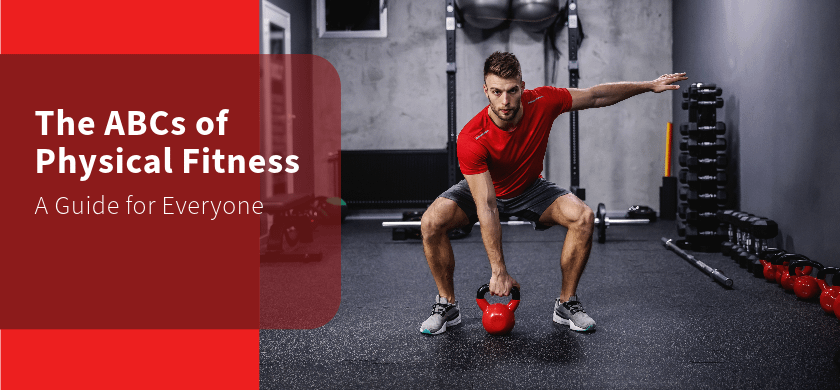When it comes to living a healthy and fulfilling life, physical fitness plays a crucial role. But what is physical fitness, and why should you care about it? In this article, we’ll delve into the world of physical fitness, breaking it down into manageable pieces that anyone can understand. We’ll explore the benefits, different aspects, and provide answers to some of the most common questions surrounding this topic. So, whether you’re a fitness enthusiast or a complete newbie, let’s embark on this journey together and unlock the secrets of physical fitness.
2. What is Physical Fitness?
Physical fitness is not just about having a sculpted body or being able to run a marathon. It encompasses a range of abilities and attributes that contribute to your overall health and well-being. At its core, physical fitness is the ability to perform daily tasks with vigor and alertness, without undue fatigue, and with ample energy to enjoy leisure-time pursuits. In simple terms, it’s your body’s ability to function efficiently and effectively.
To achieve physical fitness, one must work on various aspects of their body and mind. It’s not just about exercise but also about maintaining a balanced lifestyle that includes healthy eating, adequate rest, and managing stress. In essence, physical fitness is a holistic concept that encompasses both the physical and mental aspects of well-being.
3. The Benefits of Physical Fitness
Physical fitness offers a multitude of benefits, and its importance cannot be overstated. Here are some of the key advantages:
Improved Health
Engaging in regular physical activity helps reduce the risk of chronic diseases such as heart disease, diabetes, and hypertension. It also strengthens your immune system, making you more resilient to illnesses.
Enhanced Energy Levels
Physical fitness contributes to increased energy levels. You’ll find yourself more active and less fatigued throughout the day, which can significantly improve your productivity.
Weight Management
Maintaining an ideal body weight becomes more manageable when you’re physically fit. Regular exercise helps burn calories and build muscle, making it easier to achieve and maintain a healthy weight.
Better Mental Health
Physical fitness is not just about the body; it’s also about the mind. Regular exercise releases endorphins, which are known as “feel-good” hormones, reducing stress and improving your mood.
Increased Longevity
A physically active lifestyle is often associated with a longer and healthier life. It enhances your overall quality of life and ensures you can enjoy your golden years to the fullest.
4. Components of Physical Fitness
Physical fitness comprises several components, and it’s important to understand each one to attain a well-rounded fitness level. These components are like the building blocks of a healthy body, and they include:
Cardiovascular Endurance
Cardiovascular endurance refers to your body’s ability to sustain prolonged periods of physical activity. It’s all about your heart and lungs working efficiently to supply oxygen to your muscles during exercise. Activities like running, swimming, and cycling improve cardiovascular endurance.
Muscular Strength and Endurance
Muscular strength is the maximum force your muscles can exert, while muscular endurance is their ability to exert that force over an extended period. Strength training exercises, such as lifting weights, help you build stronger muscles and enhance endurance.
Flexibility
Flexibility is the range of motion in your joints. It’s crucial for preventing injuries and maintaining overall mobility. Stretching exercises and yoga are excellent ways to improve flexibility.
Body Composition
Body composition refers to the proportion of fat and non-fat mass in your body. Achieving a healthy body composition involves managing your weight, reducing body fat, and increasing lean muscle mass.
These components work in harmony to ensure your body functions optimally, and neglecting any of them can lead to imbalances in your fitness.
5. How to Achieve Physical Fitness
Now that you know what physical fitness entails, you’re probably wondering how to achieve it. Well, the good news is that it’s within reach for everyone. Here are some steps to get you started on your fitness journey:
- Set Clear Goals: Define what you want to achieve with your fitness routine. Whether it’s losing weight, building muscle, or increasing flexibility, having clear goals will keep you motivated.
- Create a Routine: Consistency is key. Create a workout schedule that fits into your daily life, and stick to it as closely as possible.
- Stay Hydrated: Proper hydration is essential for optimal physical performance. Drink enough water throughout the day, especially before, during, and after exercise.
- Balanced Diet: Fuel your body with a balanced diet that includes a variety of nutrients. Incorporate fruits, vegetables, lean proteins, and whole grains into your meals.
- Regular Exercise: Include both cardiovascular exercises and strength training in your routine. Aim for at least 150 minutes of moderate-intensity aerobic activity or 75 minutes of vigorous-intensity aerobic activity per week, along with muscle-strengthening activities on two or more days a week.
- Rest and Recovery: Don’t overlook the importance of rest. Your body needs time to recover and repair. Get adequate sleep and allow your muscles to heal.
- Monitor Progress: Keep track of your progress by taking measurements, noting improvements, or using fitness apps. Seeing your achievements can be highly motivating.
- Stay Motivated: Find a workout buddy, join a fitness class, or set rewards for reaching your goals. Staying motivated is often the most challenging part of the journey.
Remember, physical fitness is a lifelong commitment. It’s not about quick fixes but making sustainable changes to improve your overall well-being.
6. Physical Fitness and Mental Health
The connection between physical fitness and mental health is profound. Engaging in regular physical activity has a significant impact on your emotional and psychological well-being. Here’s how physical fitness can benefit your mental health:
Stress Reduction
Exercise is a natural stress reliever. It triggers the release of endorphins, which are chemicals in the brain that act as mood lifters. This can help you manage and reduce stress in your daily life.
Enhanced Mood
Physical activity can improve your mood and reduce symptoms of anxiety and depression. It’s a powerful tool to combat mood disorders and boost your overall sense of well-being.
Increased Cognitive Function
Exercise has been shown to enhance cognitive function, including memory, problem-solving, and creativity. It can help keep your mind sharp and focused as you age.
Better Sleep
Regular physical activity can lead to better sleep quality. It can help you fall asleep faster, enjoy deeper sleep, and wake up feeling more refreshed.
Boosted Self-Esteem
Achieving your fitness goals and witnessing the positive changes in your body can boost your self-esteem and self-confidence.
7. Physical Fitness for Different Age Groups
Physical fitness is important at every stage of life, and its requirements may change as you age. Here’s how physical fitness differs for various age groups:
Children and Adolescents
For children and adolescents, physical fitness is crucial for growth and development. It helps build strong bones and muscles, and it’s essential for overall health. Activities like playing sports, dancing, and outdoor games are great for this age group.
Adults
In adulthood, maintaining physical fitness is vital for preventing chronic diseases and maintaining a healthy weight. A mix of cardiovascular exercise and strength training is recommended.
Older Adults
As we age, physical fitness becomes even more critical. It helps maintain mobility, balance, and independence. Activities like walking, swimming, and gentle yoga can be beneficial.
It’s important to note that no matter your age, it’s never too late to start improving your physical fitness. Consistent effort can lead to a healthier and more active life.
8. Common Myths about Physical Fitness
There are several myths and misconceptions surrounding physical fitness. Let’s debunk some of them:
Myth 1: No Pain, No Gain
This saying may have been motivating for some, but it’s not entirely true. While it’s normal to experience some discomfort during exercise, pain can indicate an injury. Listen to your body and don’t push yourself to the point of pain.
Myth 2: You Need Expensive Equipment
You don’t need fancy gym equipment to stay physically fit. Many effective workouts can be done with minimal or no equipment, using your body weight or simple props like resistance bands.
Myth 3: Cardio Is the Only Way to Lose Weight
While cardio is excellent for burning calories, strength training is equally important. Building muscle helps increase your metabolism, which can aid in weight loss.
Myth 4: Exercise Is a Quick Fix for Weight Loss
Exercise is just one piece of the puzzle. Diet plays a significant role in weight loss, and it’s crucial to maintain a healthy, balanced diet alongside your fitness routine.
Myth 5: You Have to Exercise Every Day
Rest days are essential for recovery and preventing burnout. Overexercising can lead to injuries and mental fatigue. Aim for a balanced workout schedule that includes rest days.
9. Conclusion
In conclusion, physical fitness is not a one-size-fits-all concept but a journey unique to each individual. It’s a comprehensive state of well-being that encompasses physical and mental health. The benefits of physical fitness are numerous, including improved health, enhanced energy levels, and better mental health. To achieve physical fitness, you must work on various components like cardiovascular endurance, muscular strength, flexibility, and body composition.
Remember, it’s never too late to start your fitness journey. Set clear goals, maintain a balanced lifestyle, and stay motivated. Whether you’re a child, an adult, or an older individual, physical fitness is within your reach, and it can lead to a happier, healthier, and more fulfilling life.
10. Frequently Asked Questions (FAQs)
FAQ 1: What are the recommended daily exercise guidelines?
The recommended daily exercise guidelines suggest at least 150 minutes of moderate-intensity aerobic activity or 75 minutes of vigorous-intensity aerobic activity per week, along with muscle-strengthening activities on two or more days a week.
FAQ 2: Can I improve my physical fitness at any age?
Yes, you can improve your physical fitness at any age. It’s never too late to start working on your fitness. Tailor your exercise routine to your age and fitness level.
FAQ 3: Is it better to work out in the morning or evening?
The best time to work out depends on your personal preferences and schedule. Both morning and evening workouts have their benefits, so choose a time that suits you and allows for consistency.
FAQ 4: What role does nutrition play in physical fitness?
Nutrition plays a significant role in physical fitness. A balanced diet provides the necessary nutrients for energy, muscle recovery, and overall health. Eating well complements your exercise routine.
FAQ 5: How can I stay motivated to maintain my physical fitness routine?
Staying motivated can be a challenge, but finding a workout buddy, setting achievable goals, and tracking your progress can help. Keep your workouts interesting by trying new activities and incorporating variety into your routine.

